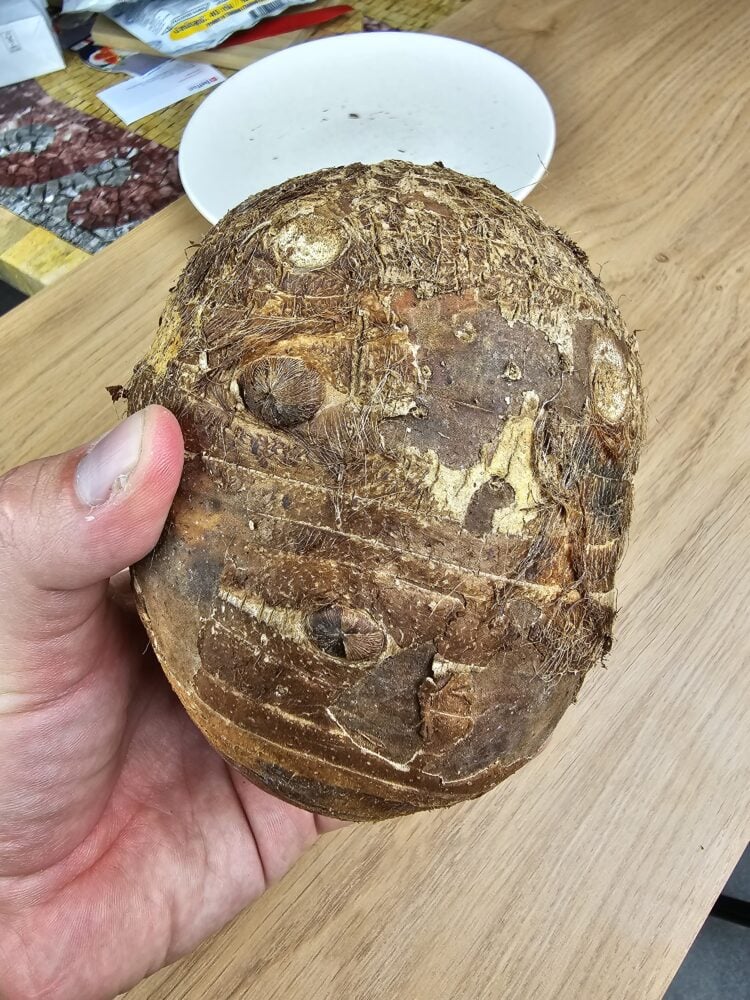What is taro?
Taro is an underground vegetable that comes from a perennial plant scientifically known as Colocasia esculenta. The plant’s root is not actually a root, but a corm or tuber—a kind of swollen underground stem surrounded by scales.
This cylindrical or spherical corm has a brown, hairy skin and produces large green leaves, heart-shaped or sometimes sagittate. Both parts, although toxic, are edible provided they are thoroughly cooked.
There are two main types of taro: Eddo (or Eddoe) and Dachine (or Dasheen).
Eddo refers to taros with small corms (150 to 300 grams) that have white, dry flesh and an earthy, slightly acidic flavor.
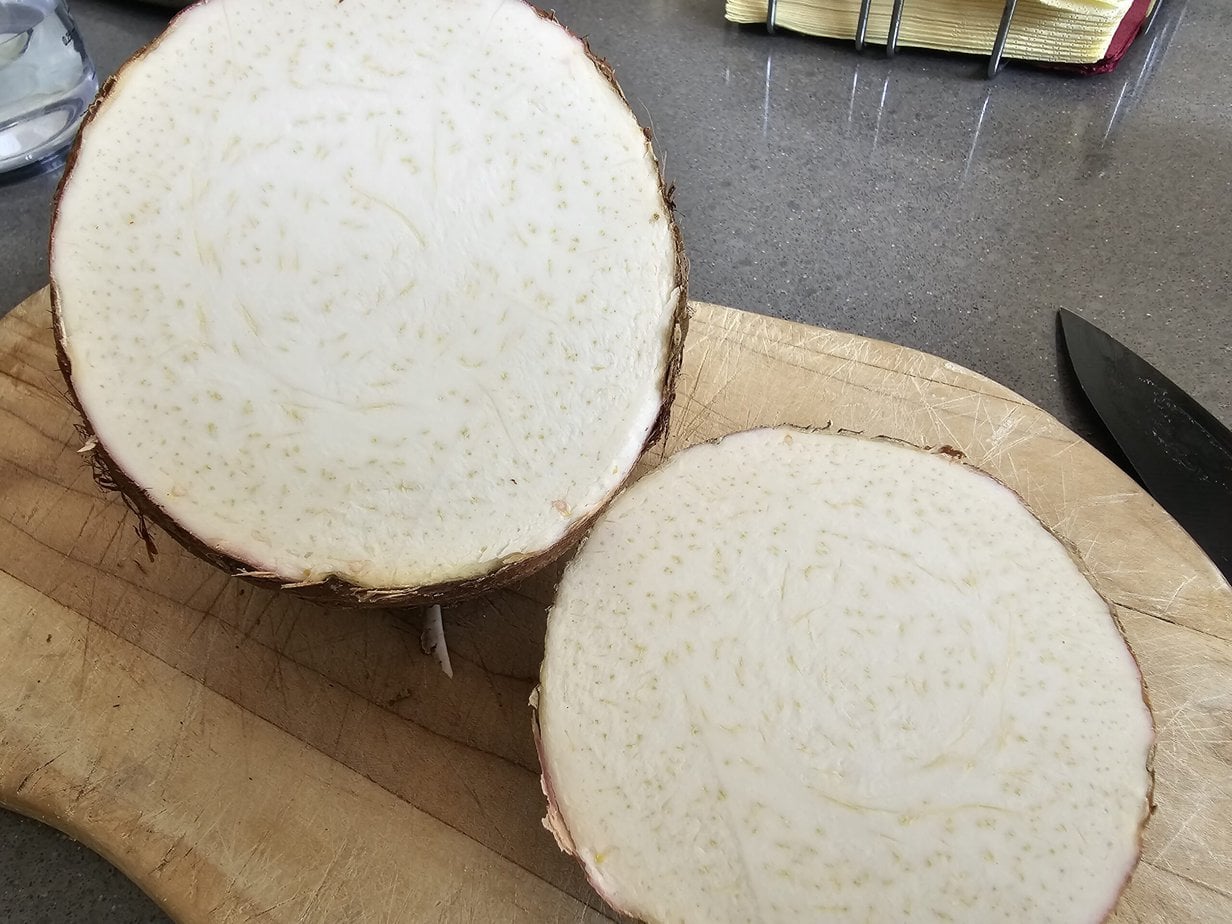
Dachine refers to taros with large corms (1 to 2 kilos) that have tender white flesh streaked with purple and a sweet, hazelnut-like taste.
In South America there is also Malanga taro, which resembles the first type but has a longer corm, a nutty flavor and a crisper flesh that can be white, yellow, pink or purplish.
Origin of taro
Taro probably originated in Southeast Asia. It may be one of the oldest cultivated food plants in the world: its seeds have been found on stone tools dating back 28,000 to 20,000 years on the Solomon Islands. Today it can be planted in the tropical regions of Asia, Africa, Oceania and the Caribbean.
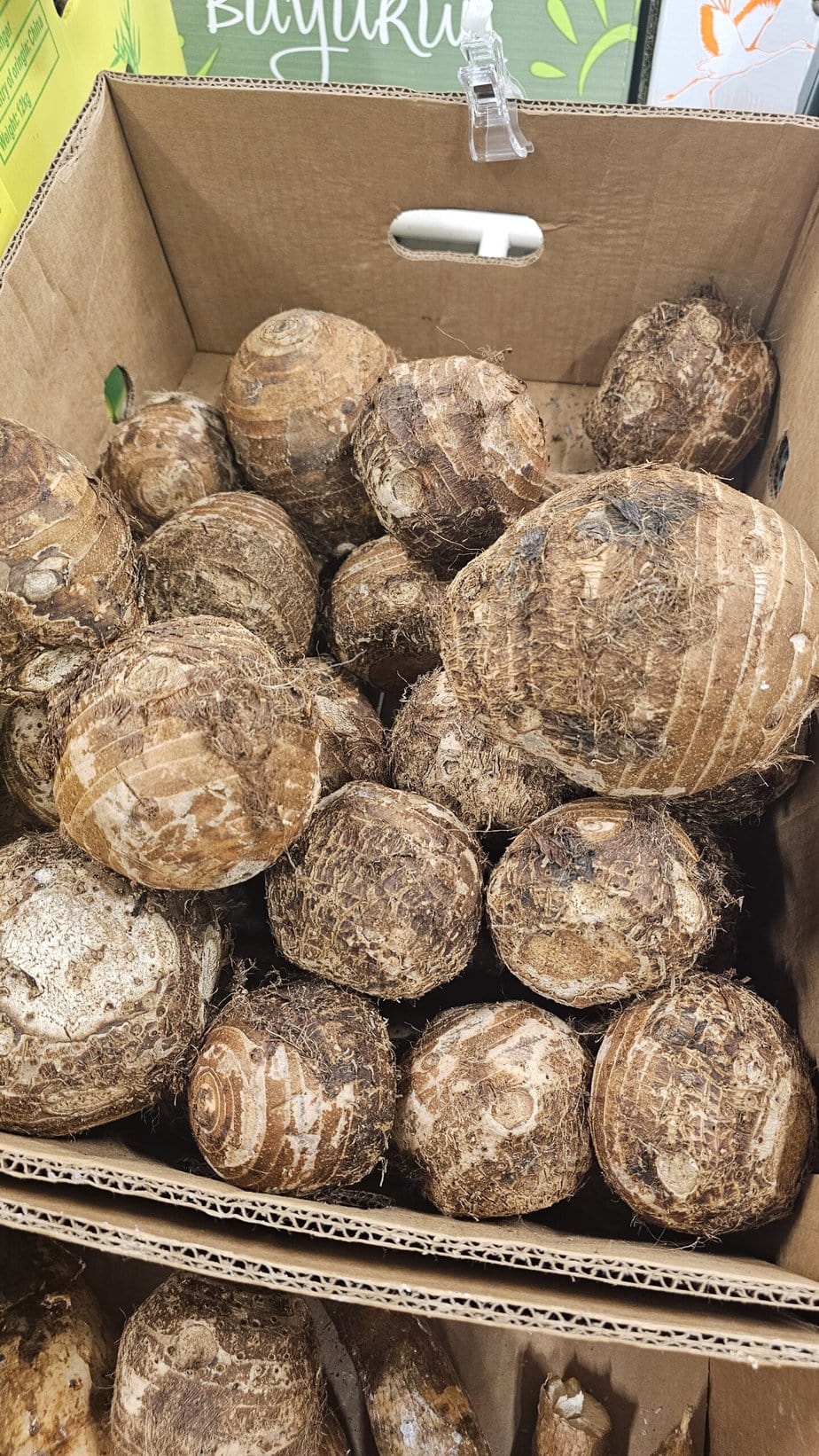
In Hawaii, this vegetable is regarded as the sacred ancestor of the inhabitants because more than 500 years ago it saved the lives of the Polynesians who had settled on the island, which had few edible plants at the time.
How is taro cultivated?
Taro can be grown from seed or from suckers that sprout from the corms. In practice, growers remove the young shoots that develop from a central corm and plant them. These shoots grow into new taro plants, which in turn produce more plants.
Taro thrives especially well in wet areas. However, it can also be grown in drier zones by using an irrigation system.
Note, however, that the quality of taro grown under these conditions cannot match that of taro from wet areas. In dry zones the plant tends to grow more slowly and its flesh is drier, whereas taro grown in a moist environment has a softer, stickier texture.
How to prepare and cook taro safely?
Remember that raw taro corms are toxic and very dangerous. They contain calcium oxalate, which can irritate the skin when touched and cause burning, pain and swelling of the mouth and throat when eaten. Be cautious when handling them before cooking.
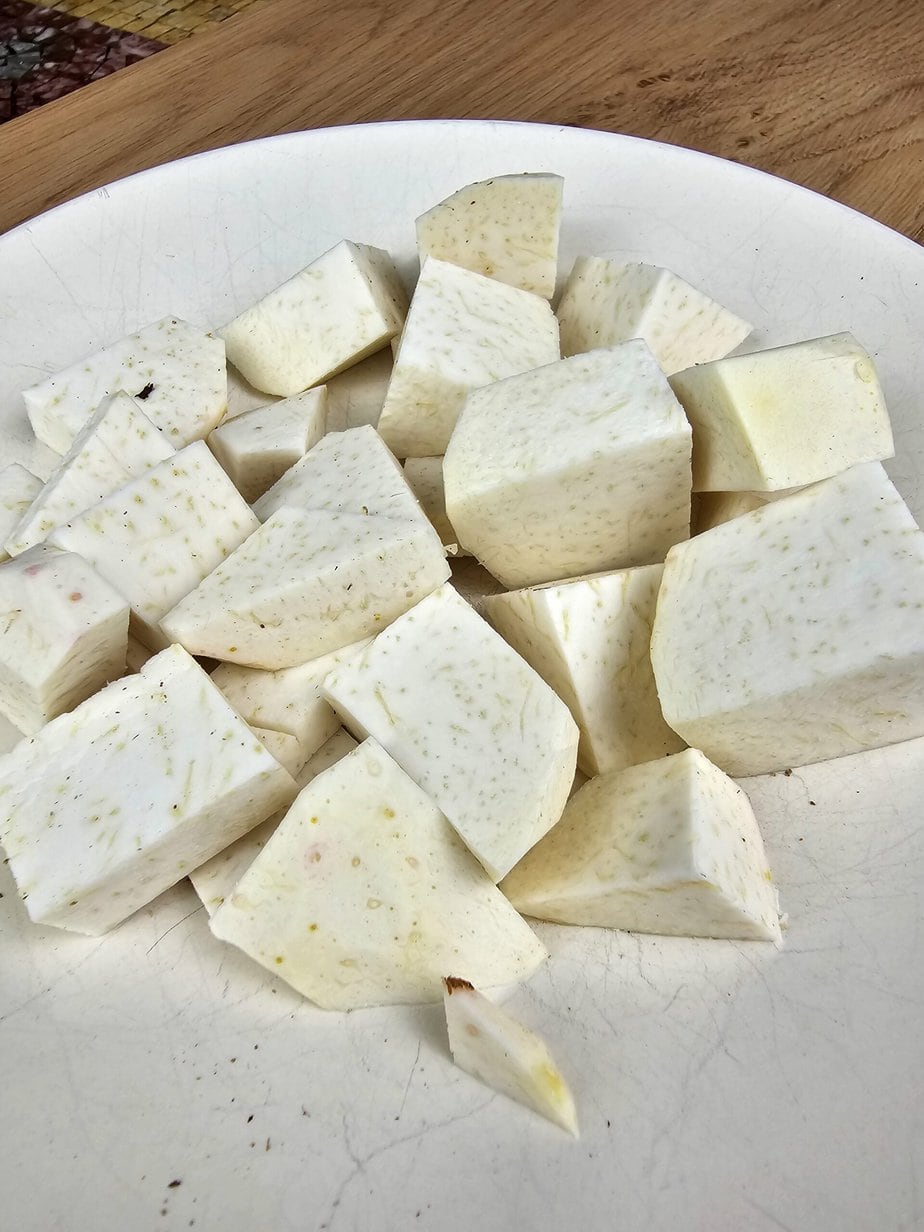
You should first wear kitchen gloves while peeling the taro skin. Then submerge the pieces in cold water and rinse them to remove all dirt. After that you can cook it however you like.
Taro corms can be cooked in many ways: boiling, steaming, braising, frying, grilling, etc.
Be aware that this root vegetable takes a long time to become fully cooked and tender. For example, boiling or steaming it will take about 20 to 30 minutes. Likewise, if you wish to use the taro leaves, you should boil them for 45 minutes, changing the water halfway through.
Taro in Asian cuisine
In Asia, taro can be used to make many delicious dishes.
The most popular are taro soups: the corms are sliced or diced and cooked with other meats and vegetables. Recipes vary from one country to another. In the Vietnamese cuisine, there is taro soup with shrimp and taro soup with water spinach and duck.
In the Japanese cuisine, taro is cooked with mushrooms and miso paste. In the Korean cuisine, the taro soup toran guk is prepared with beef and dried fish.
Braising is also common. In India, taro is braised in curry. In Japan, the famous satoimo no nimono features taro simmered with basic seasonings such as dashi, sake, soy sauce, mirin and a little sugar.
In Cantonese and Chinese cuisine, after steaming, taro is mashed into a purée like mashed potatoes and eaten as a side dish or used to make other savory or sweet dishes. For example, the purée is mixed with seasoned minced pork to make the very crispy taro dumpling (wuhgok or taro dumpling puff) fried in a pan, or combined with glutinous rice flour to make fried taro cake served with pork, mushrooms and sausages.
Sweet taro paste can also be used as a filling for mooncakes, steamed buns or Banh cam. It can be shaped into small pearls and boiled in sweet syrup to become a refreshing summer dessert. And if you are a Bubble tea fan, you have to try the taro Bubble tea!
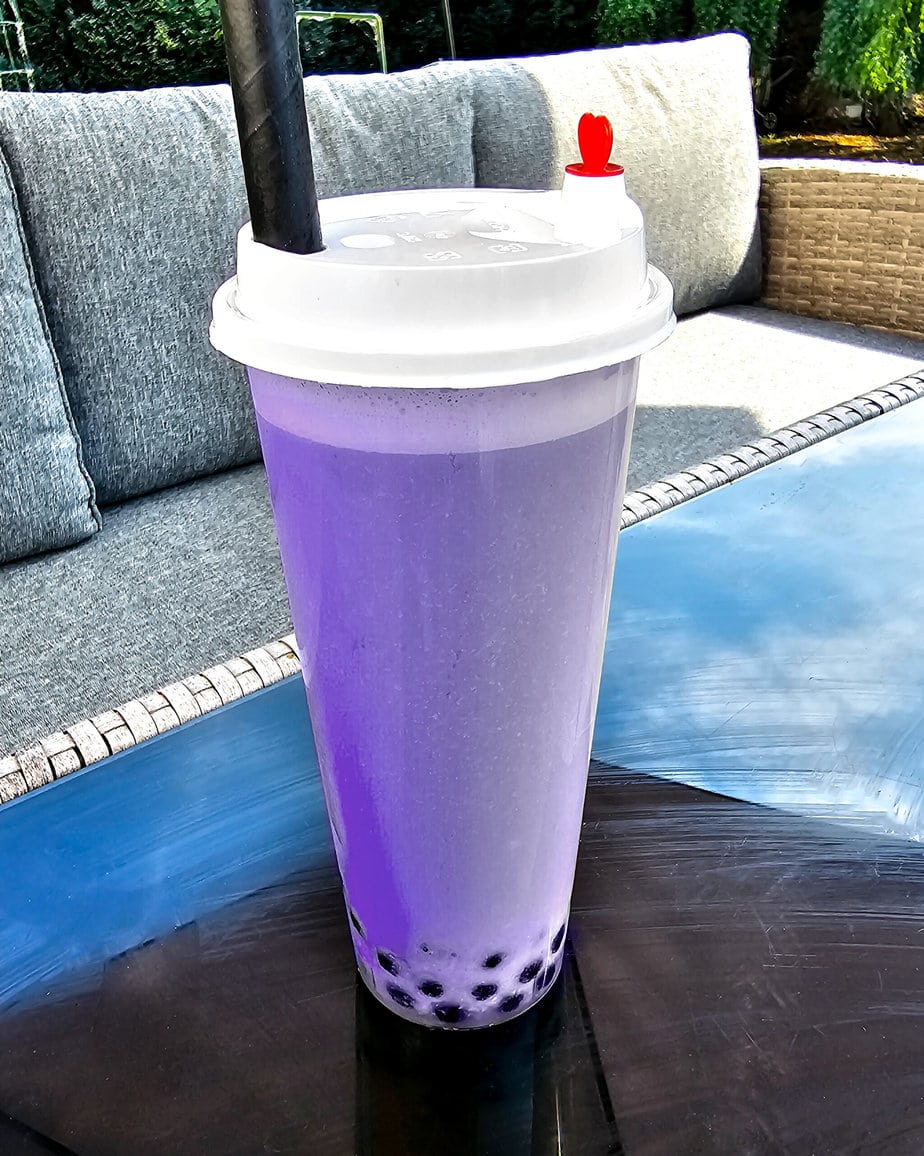
Where to buy taro?
In grocery stores, taro is generally sold as whole or cut corms. When buying, it is important to check the quality by looking at the color of the flesh. If you see brown veins, the taro may be spoiled.
The type of taro you buy also depends on how you plan to use it. For sweet dishes, Dachine taros are recommended because of their distinct flavor. If you are making chips or other recipes that need a drier texture, Eddo or Malanga will be a better choice. For soups or stews, any variety can be used, depending on the texture and taste you prefer.
How to store taro?
To store whole taro corms, keep them in a cool, dry place. Avoid refrigerating them, as humidity will quickly make them soft and spoiled. Peeled or cut corms can be kept in an airtight container in the refrigerator.
They should ideally be used within 3 to 4 days of preparation.
